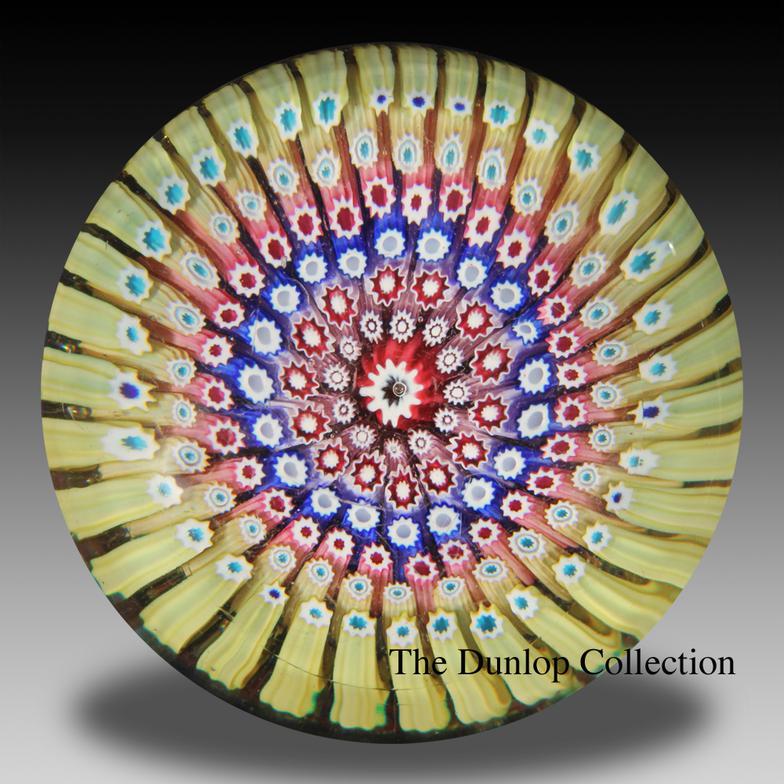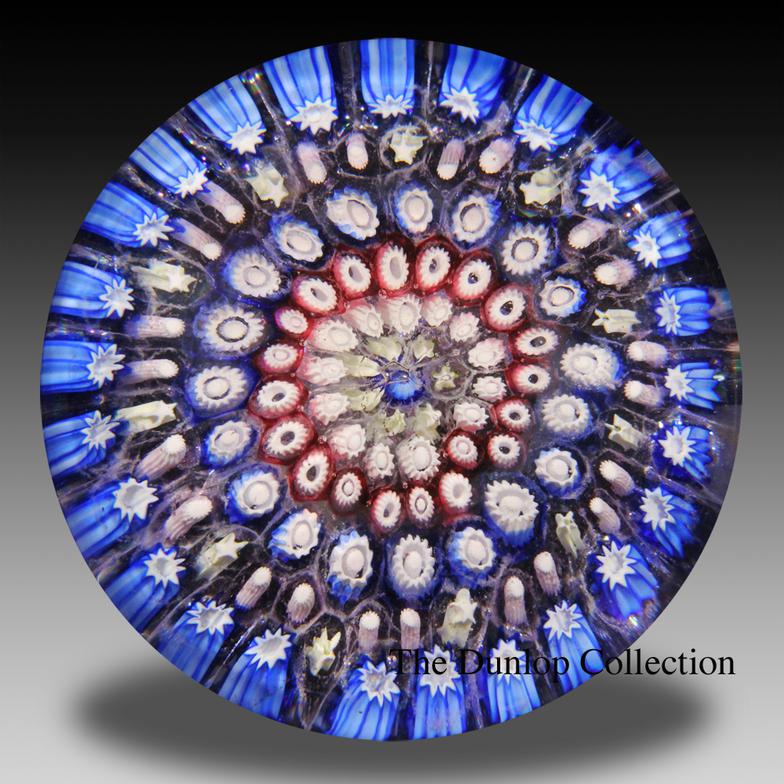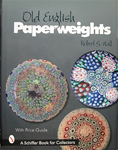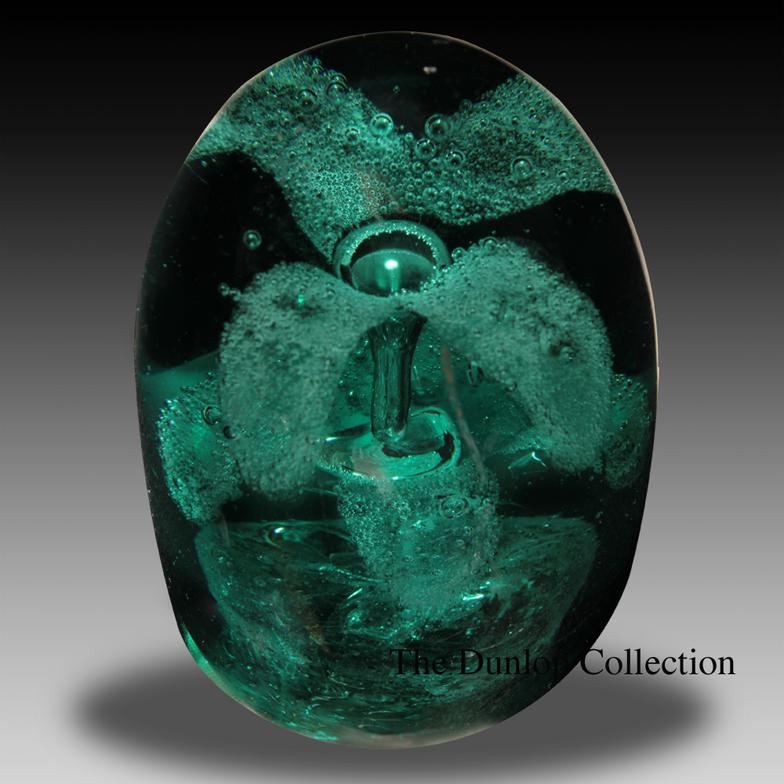images on this website are copyrighted by Papier Presse 2014


Antique English weights are divided into two periods. First, during the classic period George Bacchus & Son, in Birmingham, England made perhaps 300 fine millefiori weights in the 1848 - 1849 period. Many of these are great weights featuring large fluffy canes in close concentric and closepack weights, which a generally very large weights. The finer examples belong in any good collection of paperweights.
 Another glassworks in Birmingham, Islington Glass Works, also made some very good millefiori weights about 1849. Only about a dozen of these weights are documented so any example is treasured by its owner.
Another glassworks in Birmingham, Islington Glass Works, also made some very good millefiori weights about 1849. Only about a dozen of these weights are documented so any example is treasured by its owner.
 Most English weights come from a later period, 1910 - 1930. These are mostly close concentric millefiori weights made with simple canes. Over the years most of these have been attributed to Whitefriars, but we now know that three other glassworks, Arculus, Richardson and John Walsh-Walsh made similar paperweights and related inkwells. Many of the weights made by Arculus and Walsh-Walsh who purchased Arculus to expand their business in 1931 included fake “1848” date canes and were “aged” on the base, intending to deceive unsuspecting collectors. These weights are now roughly a century old and collectible in their own right, as long as the buyer is aware it their origin.
Most English weights come from a later period, 1910 - 1930. These are mostly close concentric millefiori weights made with simple canes. Over the years most of these have been attributed to Whitefriars, but we now know that three other glassworks, Arculus, Richardson and John Walsh-Walsh made similar paperweights and related inkwells. Many of the weights made by Arculus and Walsh-Walsh who purchased Arculus to expand their business in 1931 included fake “1848” date canes and were “aged” on the base, intending to deceive unsuspecting collectors. These weights are now roughly a century old and collectible in their own right, as long as the buyer is aware it their origin.
 The Richardson’s, a local glassmaking family since the early nineteenth century, operated a glassworks in the Stourbridge area under the name H.G. Richardson, Ltd. During the 1910s and 1920s this glassworks made paperweights and related inkwells. These items were mostly of the close concentric millefiori type incorporating from four to six rows of small, simple cog and crimp canes. An occasional closepack with the same canes is seen. Most of these weights are large, with a somewhat flat top, curving down to steep sides, with a groove toward the base forming a basal ring. The simple canes and setups of these weights are typically English of the period, with the Richardson examples being the most uniform in cane size and placement.
The Richardson’s, a local glassmaking family since the early nineteenth century, operated a glassworks in the Stourbridge area under the name H.G. Richardson, Ltd. During the 1910s and 1920s this glassworks made paperweights and related inkwells. These items were mostly of the close concentric millefiori type incorporating from four to six rows of small, simple cog and crimp canes. An occasional closepack with the same canes is seen. Most of these weights are large, with a somewhat flat top, curving down to steep sides, with a groove toward the base forming a basal ring. The simple canes and setups of these weights are typically English of the period, with the Richardson examples being the most uniform in cane size and placement.










